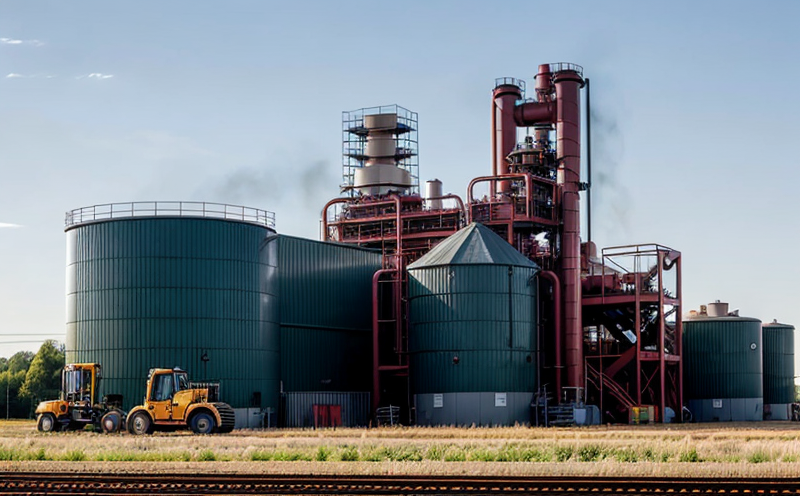ISO 3747 Industrial Blower Noise Measurement
The ISO 3747 standard provides a comprehensive framework for measuring and evaluating noise generated by industrial blowers. This service ensures that blower manufacturers, quality managers, compliance officers, R&D engineers, and procurement teams adhere to international standards to minimize the environmental impact of industrial equipment operation.
Industrial blowers are critical components in various sectors such as manufacturing, HVAC (Heating, Ventilation, and Air Conditioning), power generation, and process industries. These devices play a significant role in moving air or gases through pipelines and systems. However, their operation often generates noise that can be disruptive to the environment and human health if not properly managed.
The ISO 3747 standard outlines specific test procedures aimed at quantifying this noise. It requires precise measurement techniques using specialized equipment such as sound level meters, octave band filters, and directional microphones. The test setup must account for the acoustic characteristics of the blower's operating environment, including background noise levels.
The process begins with a detailed pre-test inspection to ensure that all components are in optimal working condition. Once ready, the blower is placed in a controlled acoustical chamber where noise measurements can be taken under standardized conditions. The test parameters include frequency bands, sound pressure levels (SPL), and sound power levels.
The results of these tests provide critical data for manufacturers to optimize their designs and ensure compliance with regulatory standards. This not only enhances the environmental friendliness of industrial operations but also improves product performance by reducing wear and tear on components due to excessive noise stress.
By adhering to ISO 3747, companies can demonstrate their commitment to sustainable practices and enhance their reputation among environmentally conscious consumers and stakeholders. The standard is widely recognized in the global market, making it a valuable tool for international trade and collaboration.
Why It Matters
Noise pollution from industrial blowers can have significant environmental and health impacts. Excessive noise levels can lead to hearing damage, stress, and reduced productivity among workers in close proximity to the equipment. Moreover, it contributes to overall ambient noise levels, which can disrupt local ecosystems.
Compliance with ISO 3747 is crucial for several reasons:
- It ensures that industrial blowers meet stringent noise emission limits set by international standards.
- The results of these tests provide valuable insights into the design and operational efficiency of the equipment, enabling continuous improvement.
- Companies can use the data to negotiate better terms with suppliers or improve their internal quality control processes.
In summary, adhering to ISO 3747 not only mitigates environmental harm but also enhances product performance and strengthens a company's market position in the competitive global arena.
Scope and Methodology
The scope of ISO 3747 encompasses the measurement of noise emitted by industrial blowers during their operation. The methodology involves several key steps:
- Preparation and Setup: The blower is placed in a controlled acoustical chamber where background noise levels are minimized.
- Measurement Setup: Sound level meters, octave band filters, and directional microphones are calibrated and positioned to capture accurate data.
- Data Collection: Noise measurements are taken across specified frequency bands at various distances from the blower.
- Analysis: The collected data is analyzed using statistical methods to ensure compliance with noise emission limits.
The results of these tests are documented in a comprehensive report that includes detailed descriptions of the testing setup, measurement procedures, and final findings. This information is essential for manufacturers to make informed decisions about design improvements and regulatory compliance.
Use Cases and Application Examples
| Use Case | Description |
|---|---|
| Manufacturing Facility Noise Control | Measure noise levels in a factory to ensure compliance with local regulations and improve working conditions. |
| New Product Development | Evaluate the noise characteristics of newly designed blowers before mass production. |
| Post-Maintenance Evaluation | Determine if maintenance activities have addressed noise issues by comparing pre- and post-maintenance measurements. |
| Environmental Impact Assessment | Analyze the overall environmental impact of industrial operations, focusing on noise pollution. |
- Quality Assurance: Use ISO 3747 to verify that new models meet performance expectations and regulatory requirements.
- R&D Innovation: Identify potential areas for noise reduction in existing designs through rigorous testing.
- Customer Satisfaction: Ensure products are quieter than competitors, enhancing customer experience and satisfaction.
The application of ISO 3747 extends beyond the immediate context of industrial blowers. It can also be applied to other types of machinery such as compressors, fans, and pumps, where noise reduction is essential for both environmental protection and operational efficiency.





